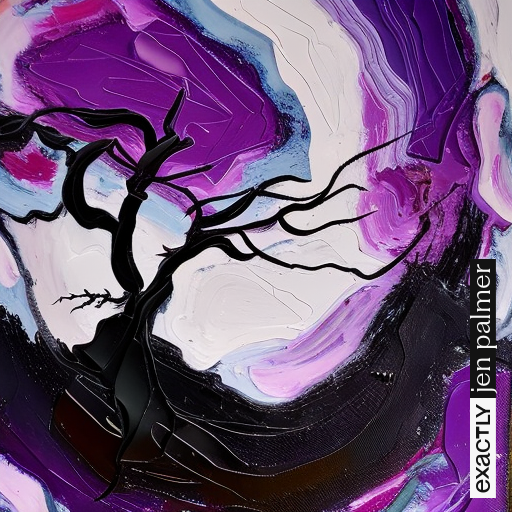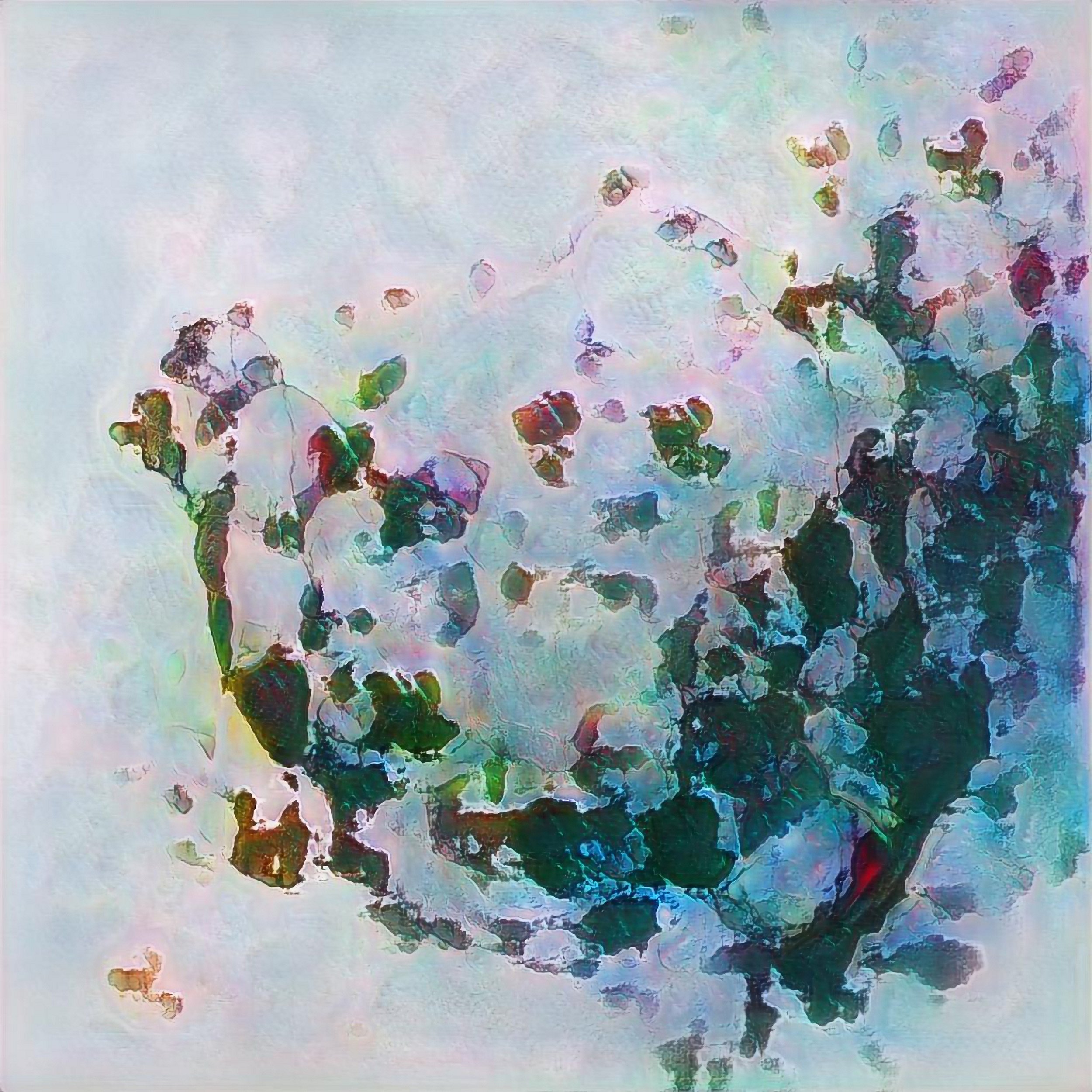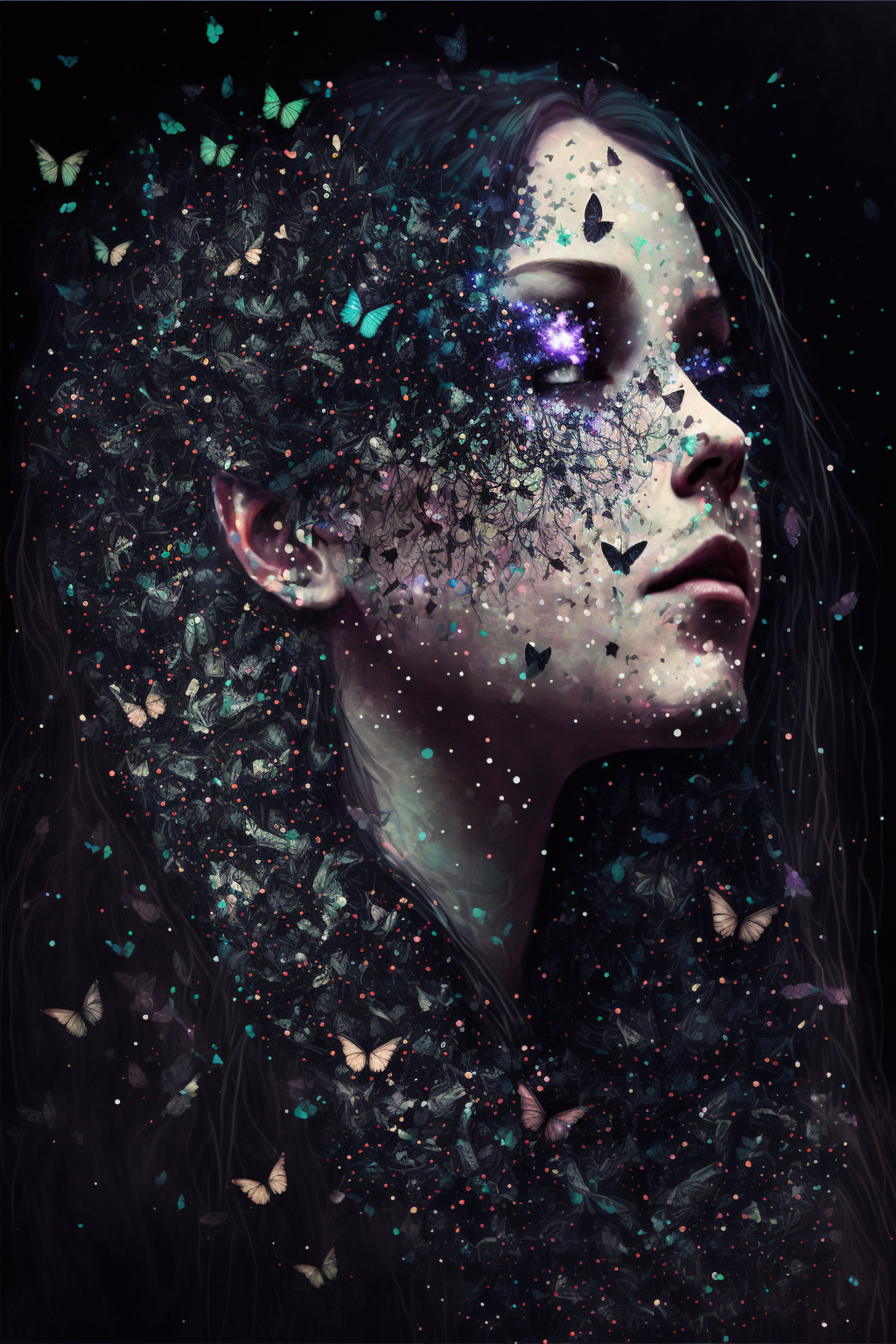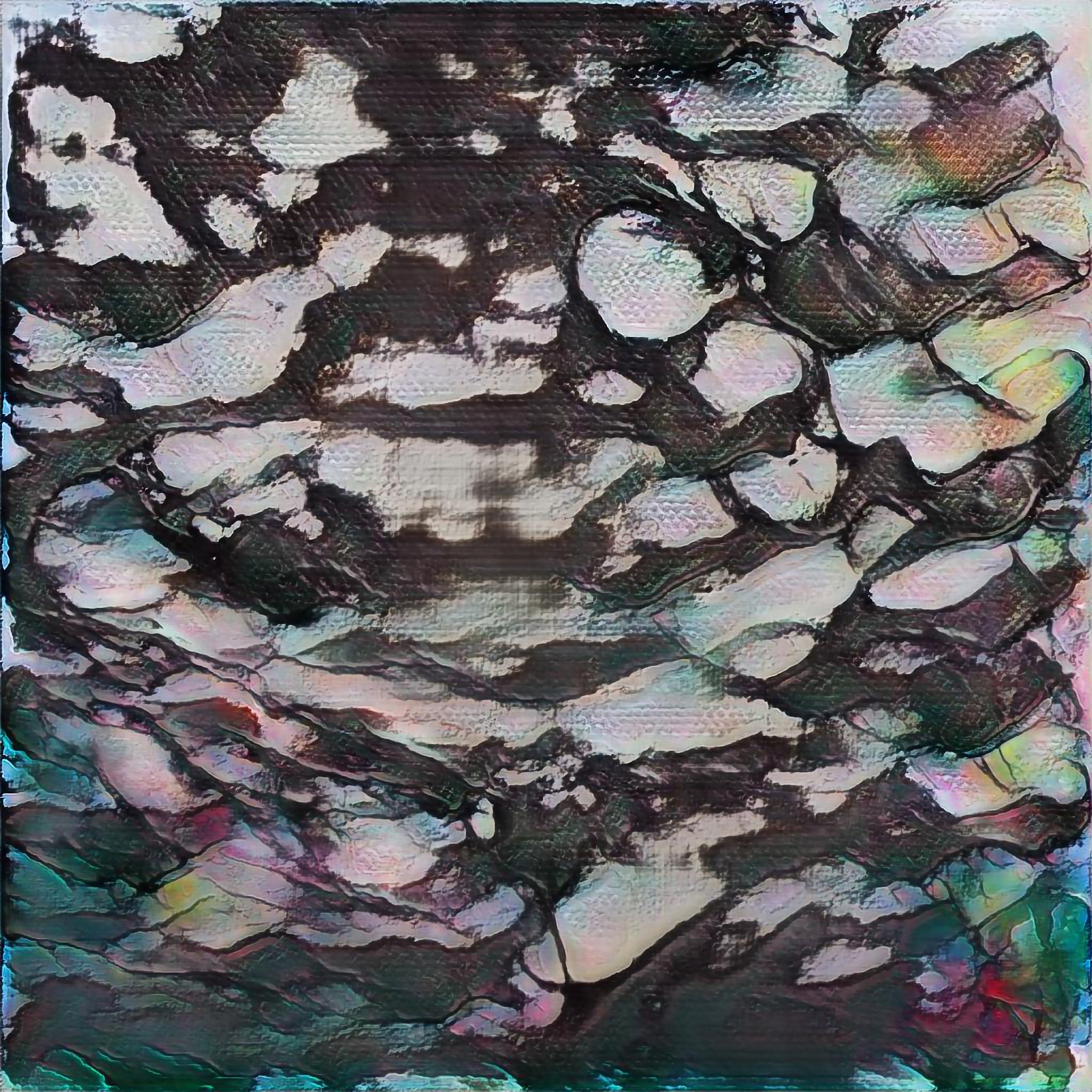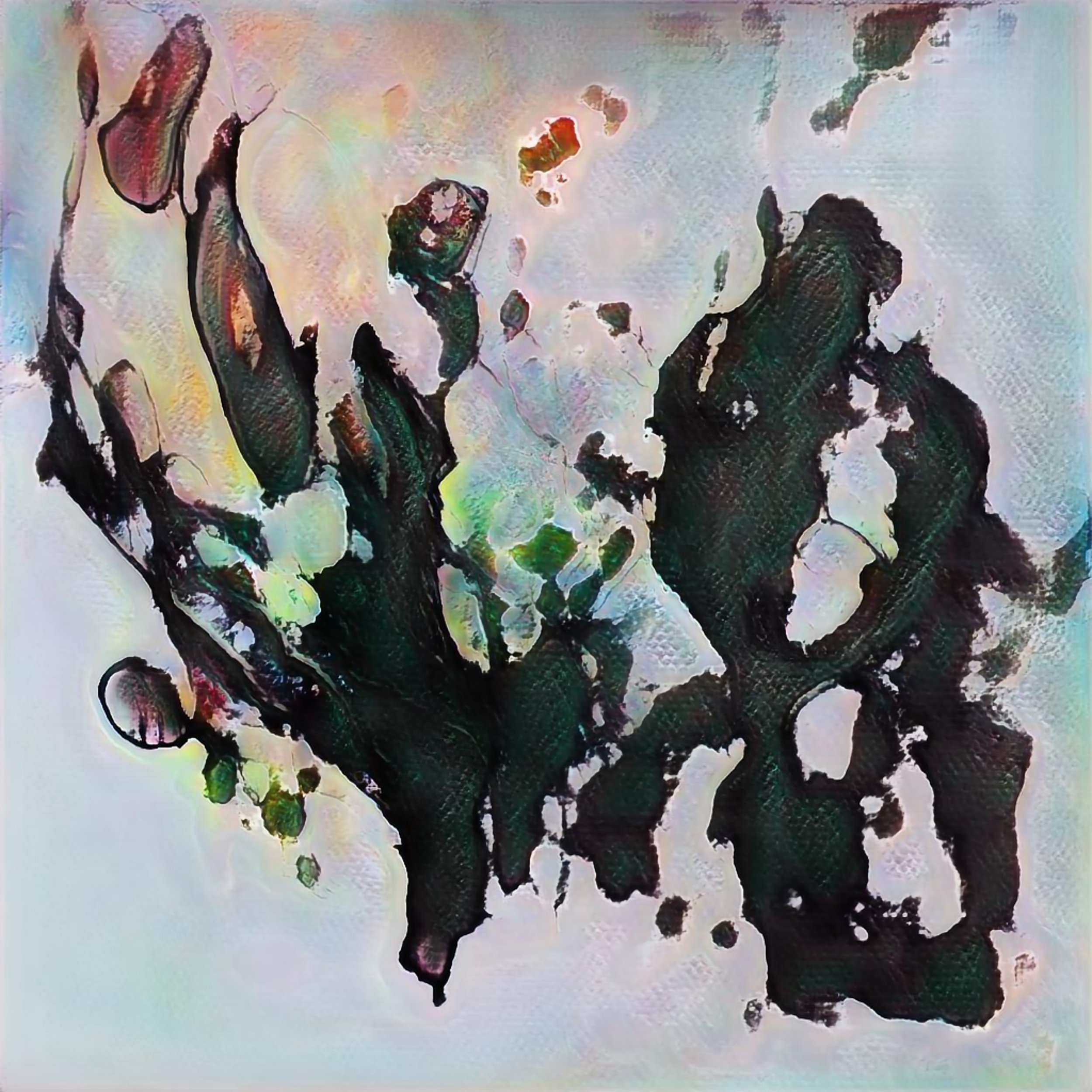Exactly.AI
I’ve got to share some of these images that I’ve been making with Exactly.AI (Durer.AI)
I was able to train a model on my paintings using about 15 images + a language component (describing the art that I’m uploading for training).
Here are some generations from the first model I trained. It’s kind of fun to play with the prompts as a parameter in regard to generations from my own models. This is something you can do with current LLMs (Large Language Models), where the GANs (Generative Adversarial Networks) or CANs (Creative Adversarial Networks) have used no prompting.
I’ll show you more of why this could be fun, but first, this first set of images was prompted using words that were very close to the words that I input for training, making them closer to the actual style of what they were trained on.
This next set is what happens with the subject (above is abstract botanical), when the prompt changes from the original input.
Here, I switched out parts to add different subjects like palm trees, crows, gnarled trees, birch trees, coral, cacti, landscapes, skulls, and cats.
Artists can use this kind of thing as a study to see how one style might transfer to a different subject, or to explore different variations on their work before they set to it with paint.
One subject that this model is really good for is leaves - since so much of the work it was trained on was botanical abstraction. I loved how these came out. The prompts included much of my original text that described the style, material, and colors, plus the description of leaves falling and blowing in the wind.










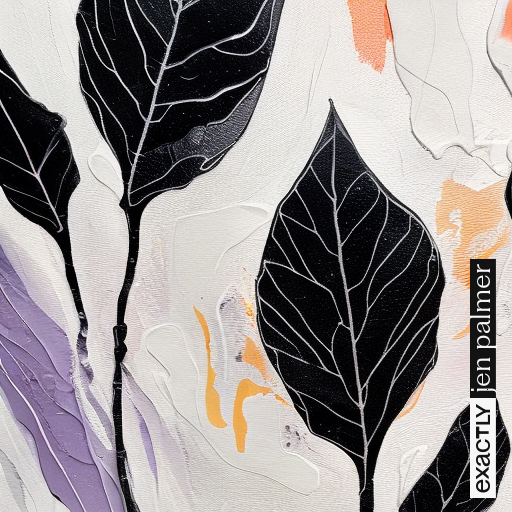








I trained another model with some newer paintings, and here is what they look like:
Again, I kept the prompts close to the original prompt used when training, and that keeps the results looking like mine.
For me, using AI art tools contributes to a process of reflection, contemplation, and integration.
I’d be curious to hear how other artists who paint intuitively have found the process of training an AI model on one’s own work.
Radical Hope Blooms
It was at least 2 years ago when I digitized a loose collection of my botanical abstract paintings in all kinds of traditional media, and used them for training an artificial intelligence model in Playform. I’ve worked with these images off and on, never really clear on what their outcome would be. Recently, I selected some generations from Playform and blended them in Midjourney, loved what was happening, and then finished them up.
Radical Hope works this way - a trust that a future goodness will exist, despite not knowing how we get to it. 🖤✨
I selected the options available to print these on with a few things in mind - my favorite papers, the acrylic blocks and prints that I’m obsessed with, and some other prints that are more affordable. If you like this series and want to get a print or a few (they look so so good in a grouping!) let me know if I can help you pick out the best options for you.
We have enough.
Expressions of Radical Hope: “We Have Enough”
Every week, I listen in to Midjourney Office Hours. I find so much of it fascinating, and I take notes to update my learning collective people to fill them in on changes, new features, and philosophy. There is a channel on the Midjourney Discord for the “daily theme” - you can choose to get notified when this theme changes or not, but it’s people in the same channel making art on the same topic. Often, this daily theme changes to reflect something discussed in office hours - like robot squid. I usually include some of these images with the update to the learning collective. This week it wasn’t really related, and I felt inspired by all the topics of discussion in general and made some abstract painting images. I try to prompt shapes, colors, styles, and materials I actually use.
I also used combinations of these ideas: new computer science, art history, biodiversity, responsibility, exploration, community, infinite compute power, radical hope, a beautiful future, post-scarcity, and monkeys looking for bananas in new places. (😂 It's always a good time!)
After making these images, I also used the /blend feature to really get something I was feeling. I took this image into Photoshop and used the neural filter Super-Zoom to upscale. Next up, I opened the upscaled image in Adobe Fresco to get painting - the live brushes are really lovely. If you’re a traditional artist working with AI, someone who has painted in Photoshop forever, or a new artist starting with AI-generated images and learning to paint digitally, definitely check it out.
I’m loving the tools that Midjourney has for making art, but also the community. So many acknowledgments of systemic issues and how we can have a better future. So much awareness that we have enough, for everyone. If I could see this community as a sea of people, I imagine many of them have these sparks of radical hope glowing within them… (Now there’s another thing for me to go prompt) 🖤✨
Dispelling Misinformation
I started using AI in my art practice a few years ago. I came across an article about Playform, and joined their artist studio. I had no idea how much I would love it, I was moving towards a glimmer of something catching the light, to see what it was. It felt reflective and magical, and it fit right into my work.
My affections towards technology are at least partially genetic. When I look at the familial lineup of mechanics, tinkerers, technology enthusiasts, information lovers, and wonder seekers, I shouldn’t be surprised. Many of the people close to me weren’t afraid of technology or people or ideas. And I mention this because it did surprise me when people reacted with fear and suspicion about my use of artificial intelligence in my art. (this was even before 2022 and the text-to-image cultural phenomenon)
As of now, everyone has pretty much heard SOMETHING about creative AI tools - but what they’ve heard is mostly misinformation and clickbaity opinion pieces aimed at getting a reaction. As a trained professional artist with a master’s degree, and with education in art therapy, art history, everything studio art, fine art, design and photography. Traditional media and new media, analog, digital, philosophy of art, ethics… and decades of experience, I’m absolutely qualified to speak on this.
I feel like I’m shouting facts into the wind sometimes, but then someone listens in and gets it, and it’s AWESOME. Because these tools are full of wonder, they are great for exploration, reflection, and I believe they have an immense capacity for healing and moving us forward.
One of the things I’m shouting - creative AI tools don’t “steal” other artists’ work and implement them into a kind of collage. That’s not how the AI tools work at all.
To explain in a relatable manner how they do work, I want you to imagine an art student, going with their class, to a museum, to study impressionist paintings. They look, they make sketches, they study them to figure out what makes them impressionist paintings, how the paintings were made, what they were made with, when they were made… they learn the concepts of what makes up impressionist paintings. Now, all of those students leave the museum and go to a painting studio, where they’re told to paint something in the style of an impressionist painting. Do they pull out paintings and copy them? Do they look at photographs of paintings and copy them? Or do they draw upon the concepts that they learned in order to make choices about color, composition, materials, etc.? When they reference these concepts, are they infringing upon some artist’s rights, living or deceased? No.
Another example - If you handed a group of people all some crayons and asked them to draw an apple, they could probably do it. Some might be red, some green, some more round, or some with spots, but everyone understands the concept of an apple. No one draws a bird or even another fruit. Those things are not part of the concept of “apple”, and the concept of an apple is so well trained in our minds that we don’t need an apple to be present to draw one.
Training isn’t stealing, and the original pieces of information that were studied are no longer present after training.
AI Art School
Curious about AI in art? Want to learn how to use AI in your established art practice, or to use AI for creative expression with no prior skills required? Join me…
I’ve started teaching classes about how to use AI in your creative practice! I’m really excited about this, because I want to share the magic that I sensed with AI in my own art practice with other artists, and develop the use of creative AI as a tool for reflective practice for anyone.
I’ll be teaching these first classes with a newly formed AI Art School, and if you’re interested in learning, there are two courses right now - one for fine artists, who already have a body of work, and one for anyone who wants to learn to use AI as a tool for creative expression. These are beginner level courses, so if you’re totally confused, or curious but don’t know where or how to start, these are for you!
The link below will take you to Rebecca Tolk’s website for further information and check out, don’t be alarmed, this is correct! I’m teaching the evening cohort of the AI for Creative Expression course, so click on that sign-up link to learn with me as your guide!
Pro-Art Filter Walk Through
I made a walk through video to answer some of the questions I’ve been getting about using the Pro-Art Filters on Playform. Let’s collaborate through AI!
Playform Pro-Art Filter Release
“Playform is excited to introduce a new selection of artists’s works as part of the release of Playform Art-Filters. Included in this selection of artists are Albert-Abdul Barr Wang, Allan Linder, Andrew Tricaso, Hana Gauër, J Rosenbaum, Jeff Brice, Jen Palmer, and Uli Ap.”
I have been having a lot of fun with these filters, testing which artwork worked best with a variety of images, so now you can go apply them to your art or photographs and get some really beautiful results! I would love to see what you make, so share and tag me on Instagram @jenpalmerart, on Twitter @jen_palmer_, or email to hello@jenpalmer.art
Made with a photograph of a magnolia flower, applying the Brightforms Pro-Art Filter (using the “fine” setting)
Made using the Brightforms Pro-Art Filter, applied to a sketch, using the “fine” filter setting.
These results aren’t upscaled, but if you create something you love and want to print it or up the resolution, you can also do that on Playform!
Creating with AI is wild! Let me know what you think in the comments <3
Pinspiration Project
I started taking screenshots of my Pinterest feed a while back. I'm not sure what I was even going to do with them, I just was interested in the way the algorithm shows me things that I like, but also creates some sort of connections between the images it's showing me. A black bird. A tattoo of a bird and berries. A berry cobbler recipe. A lady with short hair. A drapey layered outfit in shades of black. An abstract painting with blotches of purple. There is something similar that the algorithm is picking up on. These connections somehow relate to my taste. What is it? What does it say about me? What can I learn from this information?
I've used Pinterest since it came out, finding it a positive space to explore ideas. Using boards to pin my project inspiration, plan parties, collect quotes, connect with people who liked these niche things, or experienced chronic illness.
For this project, I took the screenshots where I found interesting connections, and I separated the images so that the software doesn't implement the grid form of Pinterest - I'm interested in what happens between the concepts of these images.
I fed these 200+ images to the Playform platform, and am currently waiting to see what happens!
Can machine interpretation give us useful information about ourselves? Will it reflect something of my values back to me? My tastes? My interests? What form will these take? ...
Let me tell you about my new romance…
I joined the virtual studio at Playform, and am currently working on a project based on recent collected works. I was truly excited to discover this platform for creating AI art, and maybe have previously underestimated my love for all things digital?
In thinking about it, I realized that I can trace my digital art-making back to my video painter, and maybe back to those days in kindergarten when we had computer class, and got to make art on the Macs? I'm one of those millennials who didn't have to be tech-savvy - we didn't have the internet until around when I went to college. I didn't even know I was tech-savvy until somewhere in my 30's and I realized I was giving out a lot of help, and it was surprising to me that people didn't understand it. Now, I would definitely consider myself an early adopter. It makes sense that I am because I feel ridiculously excited about the potential I see. Partially because exploring that potential gives me such a sense of joy. I think this is deeply related to radical hope. It's not something that exists here yet, but I can feel its existence. I noted that same sense of joy was frequently present when editing photographs, playing with texture and color, layers, versions...
These explorations are my way of studying, understanding something more. It feels like a word I can't recall, a place I can't remember my way to - It is so strong, but it is also emptiness. The matter is in the relationship, in the space between. The Playform platform is a tool to help me explore this space!
How does it work? There are computers that the platform is connected to, and I uploaded around 50 of my works of art. The computers essentially then learn those images, the forms, lines, colors, etc., and create renderings of new work. Those renderings can be further developed, mixed, and used in ways I haven't even discovered all of yet.
Developing models on Playform
I'm (obviously) enthusiastic about this new digital tool, and how it truly fits into my work.
Case in point - The other day, I was just sitting in my studio, smiling to myself thinking about Arthur Batut and his ideas on virtuality.
"To reproduce with the help of photography a figure whose material reality does not exist anywhere, an unreal being whose constituent elements are scattered over a certain number of individuals and which can only be conceived virtually, is it not a dream?" - Arthur Batut (translated from French)
Ah, so thrilling! Did I mention Batut lived from 1846 to 1918? What would he even think of something like Playform? We can't know the answer, but I'd love to hear yours!
Alcohol Ink on Yupo Paper.
In the flow with alcohol ink on yupo paper.
Oh my gosh, I’ve been really enjoying making work with alcohol ink on yupo paper. I’d only previously used alcohol ink with encaustic medium. I liked it then, and have missed making encaustics, which is one reason why I wanted to try working with these otherwise. My encaustic studio has been out of commission since we moved here - just before Christmas, and this will be the 3rd Christmas here - clearly, I need to figure something out to get my encaustic studio space going again. (Rental - carpet- and I get wax EVERYWHERE)
In the meantime, I’ve heard buzz about yupo paper. I was all, what now? But it’s this synthetic “paper” that works really well for alcohol ink. It doesn’t absorb the liquid, and you can just keep working on it. I made the mistake of using my regular heat gun - too hot, don’t do it - a hair dryer is just fine. I see why everyone is all yupo, yupo!
Over the past few years, my work has developed to have these lines, that are usually informed by the shapes of the paint under them. I got really excited about the way the ink moves to the outer edge of the shape with alcohol ink, and the way you can put the alcohol on it to make it spread out more, carrying it further. There’s a lot of play with alcohol, and a lot less ink than you’d imagine. So, I’m getting these shapes that are part of my language, with a new medium. *SWOON*
LACHRYMA LINEAGE
I KNOW I’m this super-sensitive, emotional creature, but sometimes, waves of emotion still take me by surprise, which is what happened with a few of these pieces I’ve been working on. I hope that you’ll feel them too. <3 I’ll be releasing this series, along with the one featured above, to my email list first - they’re all affordably priced 5 x 7’s, so get thyself on that list below!
Do you like to try new things? If you’re an artist, have you ever worked with alcohol ink or yupo paper? Tell me about your adventures in the comments!
FEATURED POSTS























